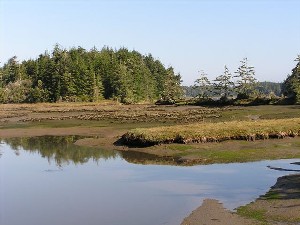Explore wetlands and estuaries–where fresh water meets salt water! Learn about watersheds and water movement and test water flow in mini-watersheds. With different samples of water, learn about density and salinity, and how along with temperature differences, these properties create water layers and currents. Examine different sediment types and test their properties. Learn about osmosis and how plants and animals meet the challenges of living in changing salinity. Study food webs and investigate adaptations of crabs, worms and clams. Examine the many ways birds are adapted to feed in these rich environments. Test your own hypotheses of the workings of mudflats. There’s a lot more there than mud!
MARE lessons (Teacher’s Guide to Wetlands)
Salinity Currents Bird Beak Buffet
Bivalve Booklets Butts Up
Clam Dissection Estuary Life
Build an Estuary
Lessons
Water Cycle Bag: States of Matter & Window Experiment
Salt Marsh Plants: Osmosis & Observations, PPT
Growing Up in the Ocean, Complex Life Cycles*
*first publication occurred in Science Activities, Classroom Projects and Curriculum Ideas, 46(4)
Bird Adaptations: Wings, Beaks, and Feet
Oyster Bed Ecology Virtual Experiment, PPT
Field Inquiry: Mudflats
 This material is based upon work supported by the National Science Foundation under Grant Nos. 0338153 and 0638731. Any opinions, findings, and conclusions or recommendations expressed in this material are those of the author(s) and do not necessarily reflect the views of the National Science Foundation.
This material is based upon work supported by the National Science Foundation under Grant Nos. 0338153 and 0638731. Any opinions, findings, and conclusions or recommendations expressed in this material are those of the author(s) and do not necessarily reflect the views of the National Science Foundation.

